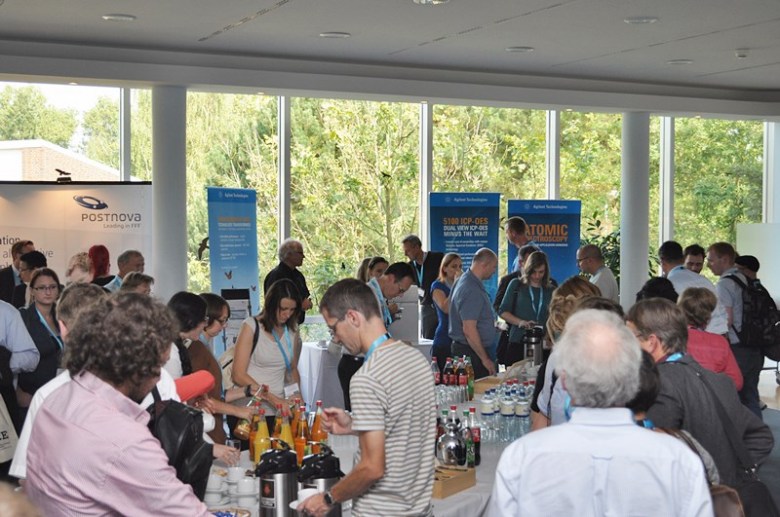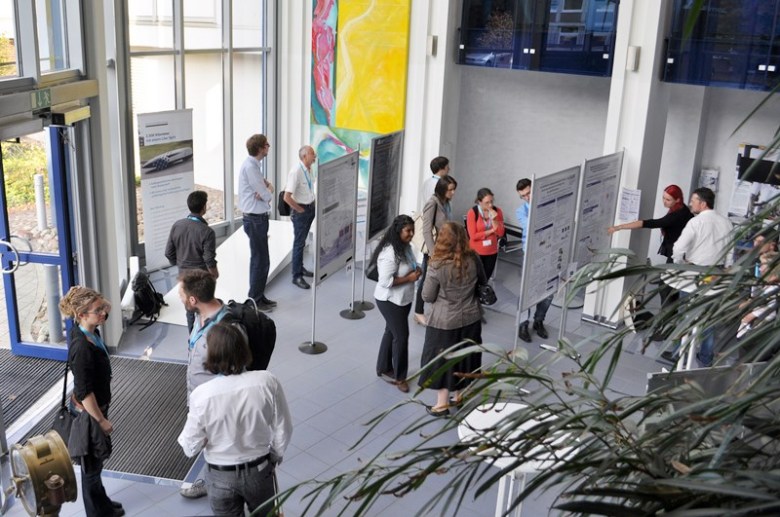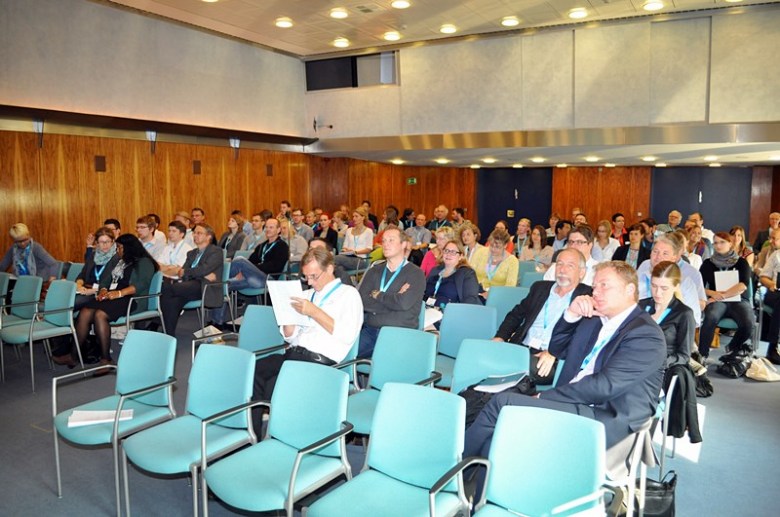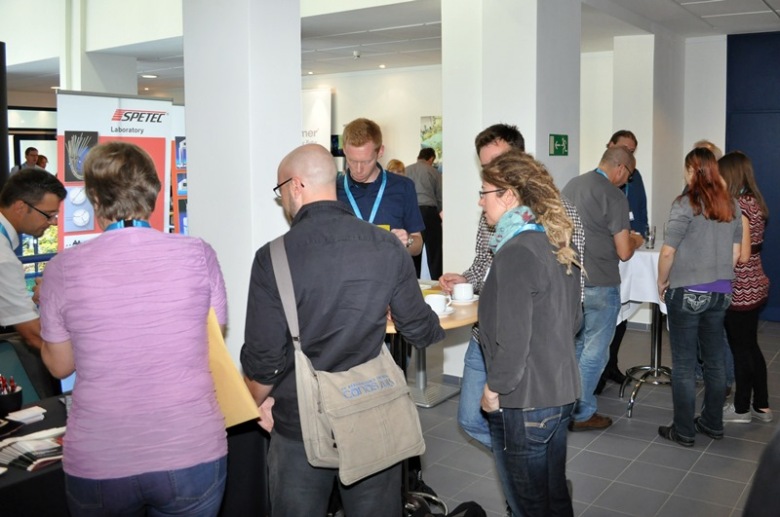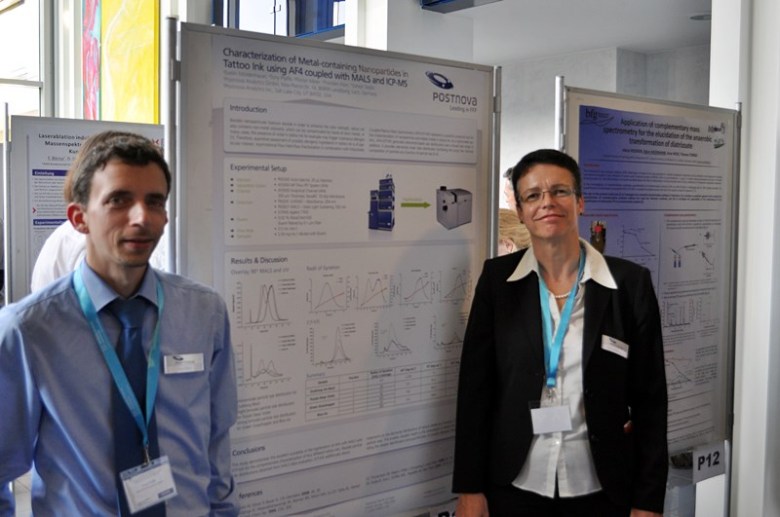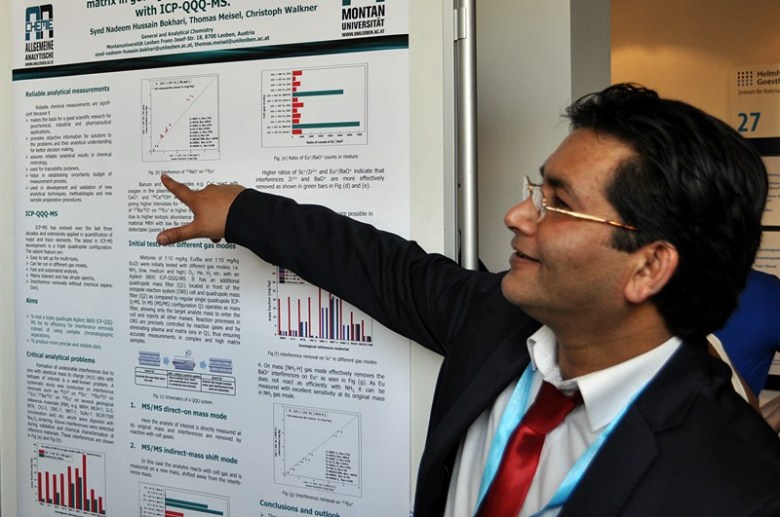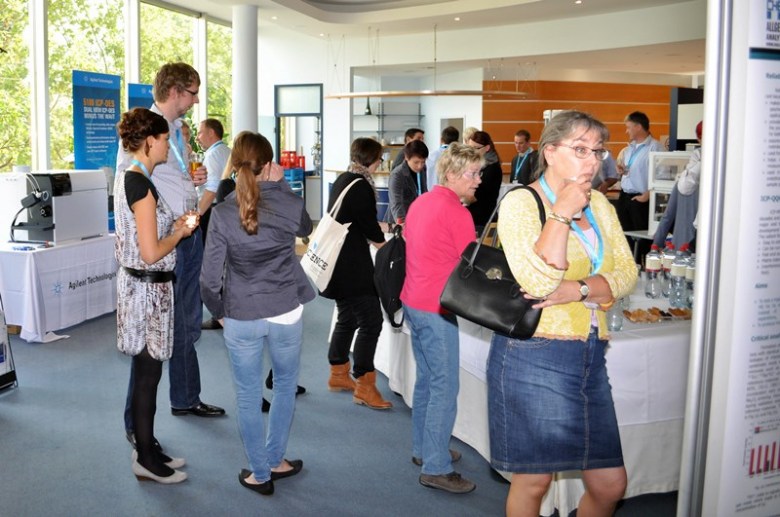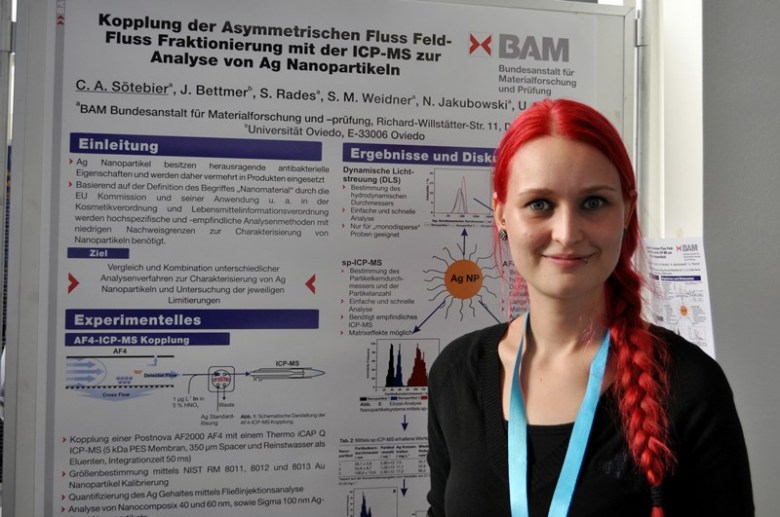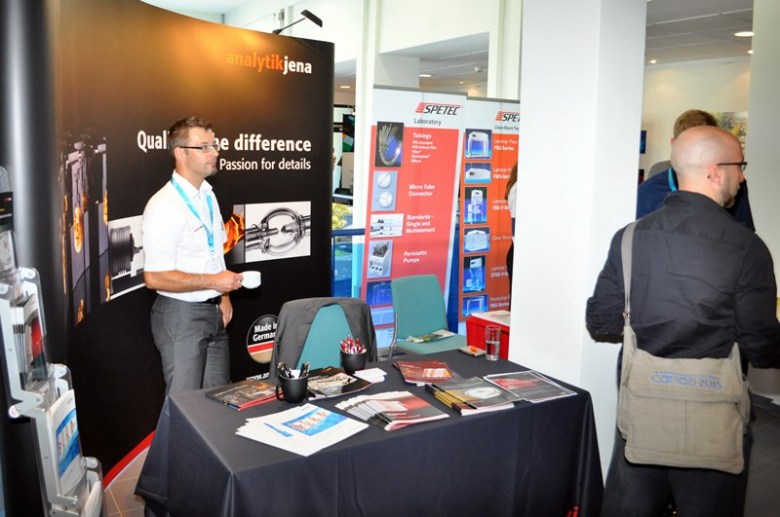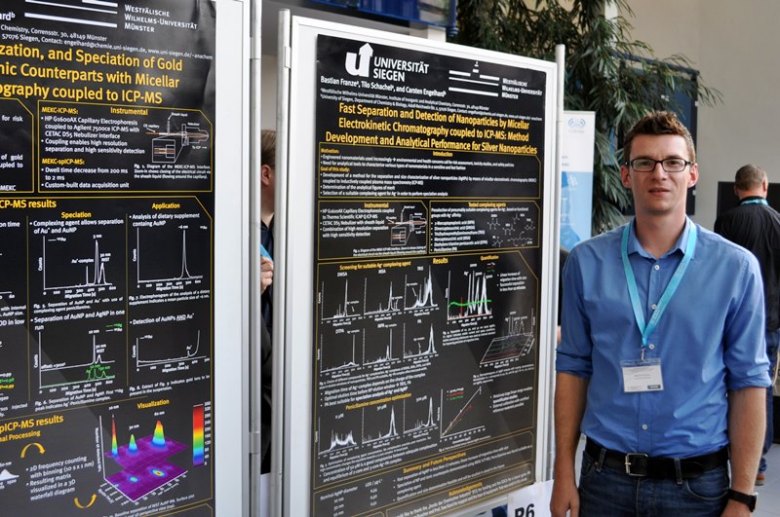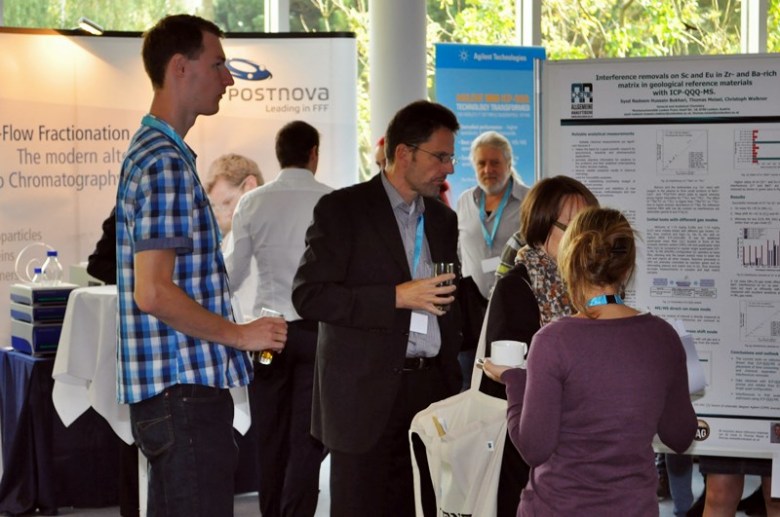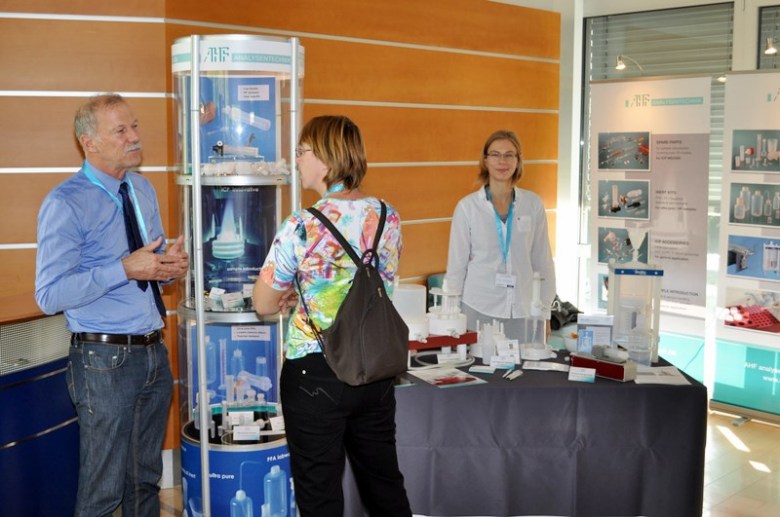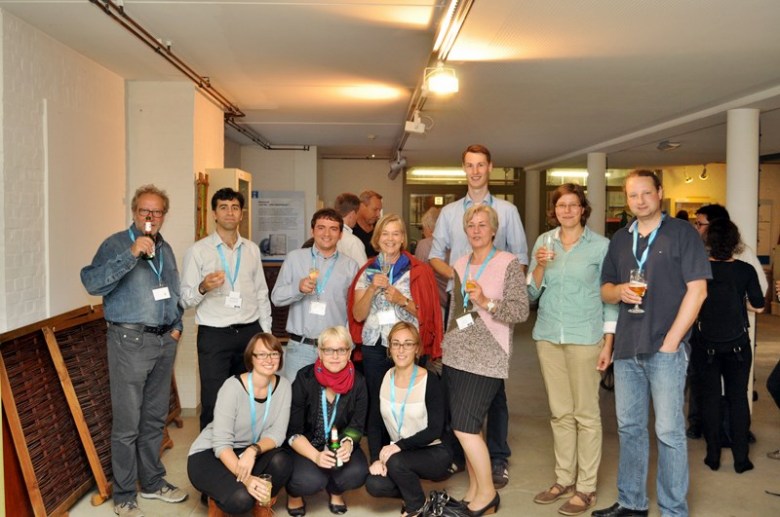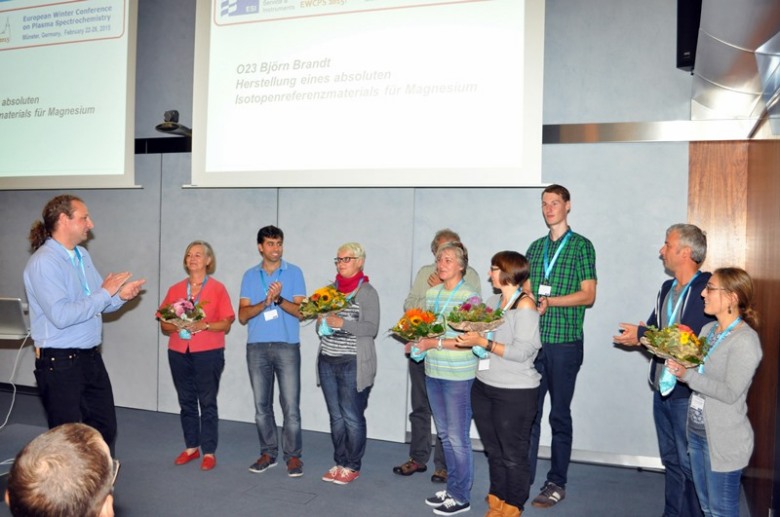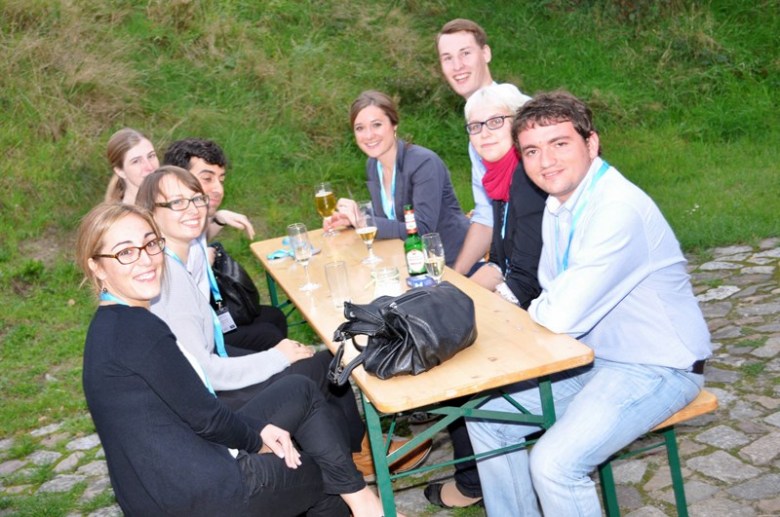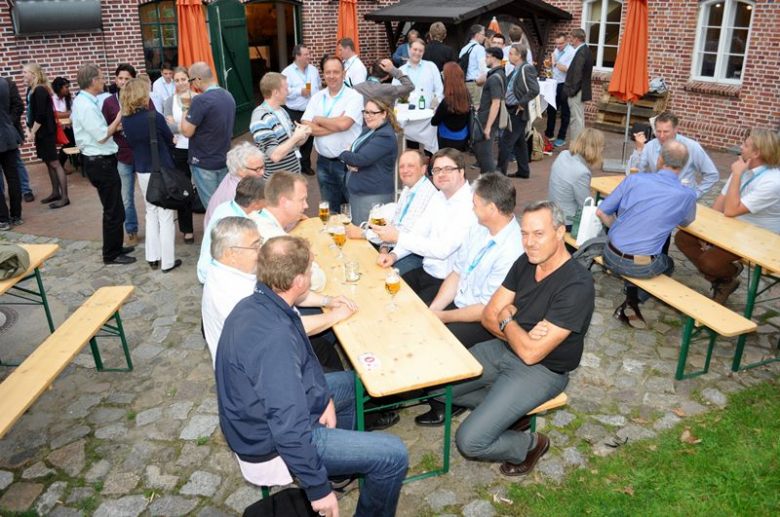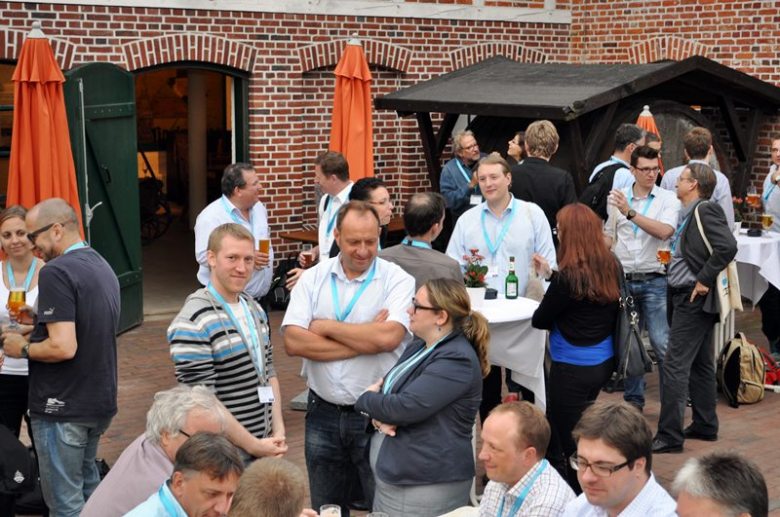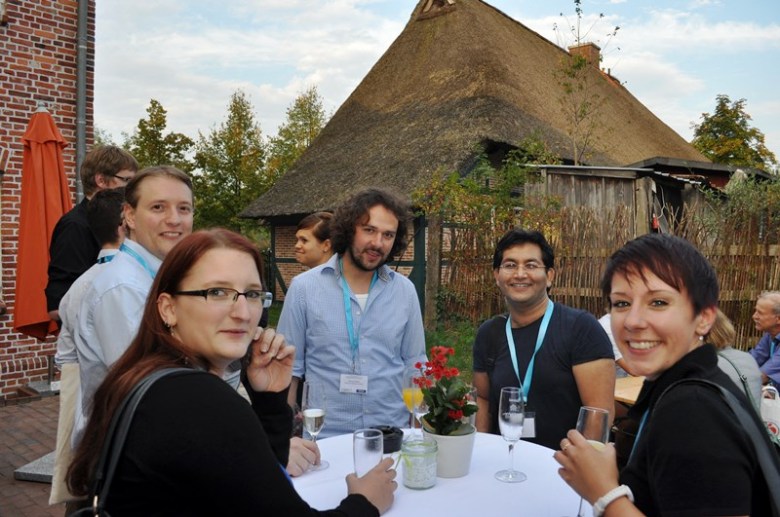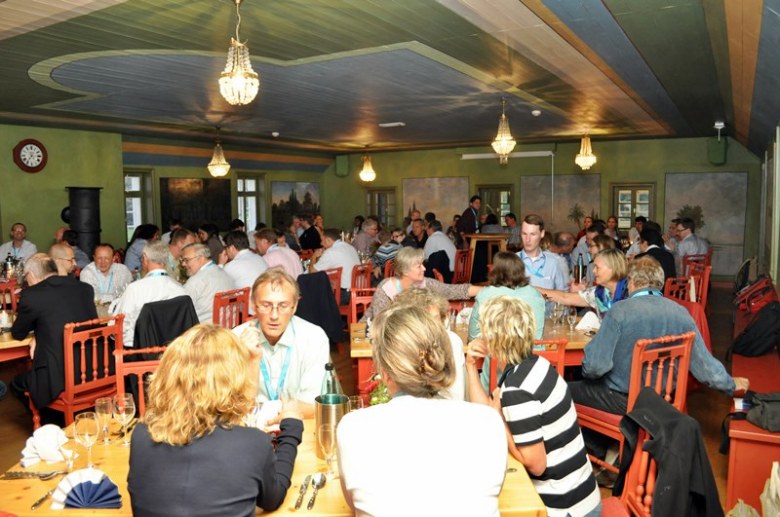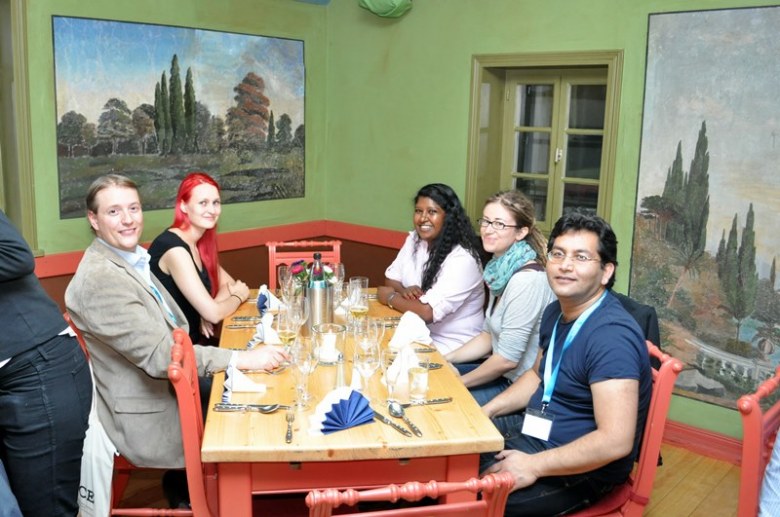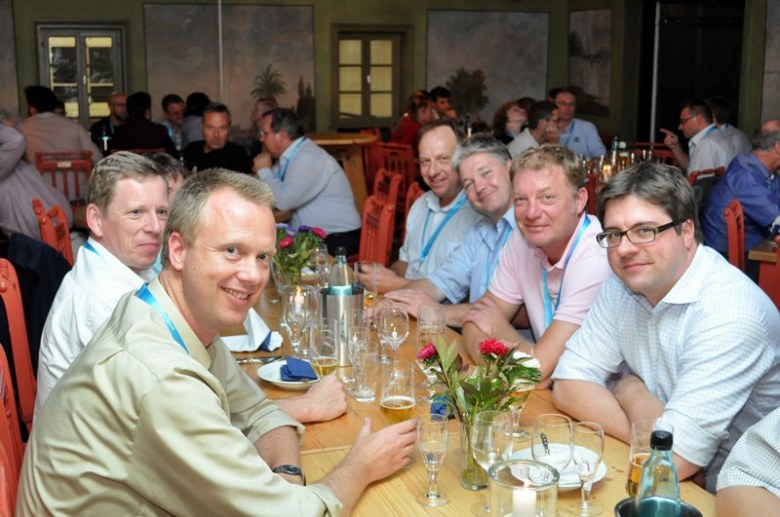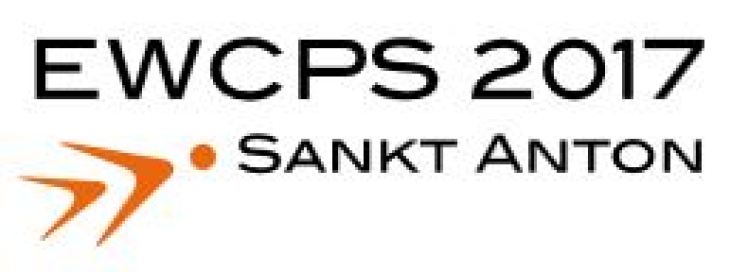News & Events
- (16.04.2019) Messkampagne auf der ATAIR - zweiter Anlauf
- (13.03.2019) Messkampagne auf der ATAIR
- (23.11.2018) Steffen Hellmann gewinnt Possehl-Ingenieurpreis 2018
- (07.08.2018) DAAS-Doktorandenseminar
- (09.11.2017) Rhein Beprobung erfolgreich beendet
- (31.08.2017) Beprobung des Rheins gestartet
- (02.08.2017) Untersuchungen im Windpark DanTysk
- (08.06.2017) Dr. Johanna Irrgeher im ZEIT Campus Magazin
- (07.03.2016) Erfolgreicher Abschluss der European Winter Conference on Plasma Spectrochemistry 2017
- (21.02.2017) Küstenforscher helfen bei der Organisation der Europäischen Winterplasma Konferenz
- (14.12.2016) Topic Theme: Three elements in one sweep
- (01.12.2016) Highlight Thema: Drei Elemente auf einen Streich
- (19.10.2016) Wissen schaf[f]t Zukunft Preis 2016 an Dr. Johanna Irrgeher
- (19.09.2016) Posterpreis für Tristan Zimmermann auf dem 25. ICP-MS Anwendertreffen
- (01.08.2016) Küstenforscher untersuchen das Umfeld von küstennahen Windparks
- (27.06.2016) Küstenforscher setzten Untersuchungen des Kontinuums zwischen Fluss, Ästuar und Küste fort
- (16.06.2016) Küstenforscher untersuchen das Kontinuum zwischen Fluss, Ästuar und Küste
All seminars will be held at Helmholtz-Zentrum Hereon, building 38, seminar room at 11:00 am.
| Date | Titel | Lecturer |
| July 21st, 2015 | Element- und Isotopenfingerabdrücke als Indikatoren für die Umweltvergangenheit | Prof. Thomas Prohaska Universität für Bodenkultur in Wien/Tulln (Department für Chemie, Abteilung Analytische Chemie) |
| April 24th, 2014 | Identification and behavior of selected inorganic nanoparticles - Analytical studies by inductively coupled plasma mass spectrometry | Petra Krystek, Institute for Environmental Studies (IVM), VU University, Amsterdam, The Netherlands |
| April 13th, 2014 | Quellen – Wege – Senken: Herausforderung und Potential der modernen Isotopenanalytik in der angewandten Ökosystemforschung | Johanna Irrgeher, University of Natural Resources and Life Sciences Vienna (BOKU-UFT) |
| November 7th, 2013 | Metabolomic fingerprinting analysis of Procambarus clarkii as bioindicator of environmental pollution | Tamara Garcia-Barrera, Department of Chemistry and Material Science, University Huelva, Spain |
| August 16th, 2013 | Isotopes reveal it all - The usefulness of stable traditional, non-traditional, and radioactive isotope tracers | Bernadette Proemse, University of Calgary, Canada |
| March 21st, 2013 | The potential of isotopic research in analytical ecogeochemistry | Thomas Prohaska, University of Natural Resources and Life Sciences, Vienna, Austria |
| September 20th, 2012 | Environmental metallomics and metabolomics in marine coastal research | José Luis Gomez-Ariza Department of Chemistry and Material Science, University Huelva, Spain |
| May 31st, 2012 | Metrological alternatives for the determination of (Bio)Organic compounds by IDMS: Minimal labelling, heteroatom labelling and post- column 13C addition. | José Ignacio García Alonso Department of Physical and Analytical Chemistry, University of Oviedo, Spain |
| May 30th, 2012 | Measurement of isotopic composition of metal species for the development of primary measurement the study of species specific environmental reactivity and biogeochemical cycles | Pablo Rodríguez González Department of Physical and Analytical Chemistry, University of Oviedo, Spain |
| June 20th, 2011 | Metals as contaminants and their effects on aquatic organisms | Dr. Marijana Erk, Laboratory for Biological Effects of Metals, Institut Ruđer Bošković |
| September 30th, 2008 | The dynamic proteome: Mass spectrometry based strategies to characterize post-translational modifications of proteins | Prof. Ole Norregaard Jensen, Department for Biochemistry and Molecular Biology, University of Southern Denmark, Odense, Denmark |
| August 12th, 2008 | Selenium distribution and metabolism in mice administred with Se (IV) orally and intravenously. | Prof. Naoki Furuta, Department for Applied Cemistry, Faculty of Science and Engineering, Chou University Tokyo, Japan |
| July 10th, 2008 | Dual-source TOF-MS | Prof. Gary M. Hieftje, Laboratory for Spectrochemistry, Department of Chemistry, Indiana University, Bloomington, IN 47405 |
| May 21st, 2008 | The Environmental Specimen Bank and research on seals and otters in Swedish waters at the Swedish Museum of Natural History | Anna Roos, Department for Environmental Research, Swedish Musuem of Natural History, Stockholm, Sweden |
| August 14th, 2007 | Lösliche Arsen-Schwefel-Verbindungen - Analytik und Umweltrelevanz | Prof. Dr. Dirk Wallschläger, Environmental & Ressource Program, |
| August 2nd, 2007 | Studies on the biotransformation of arsenic, selenium and cadmium: the case for quantitative speciation analysis | Prof. Dr. Kevin A. Francesconi, Institute of Chemistry - Analytical Chemistry, |
| July 6th, 2007 | ICP Mass Spectrometry as a Workhorse in the Modern Analytical Lab - Unraveling Scientific Problems via Determination of Trace Elements, Elemental Species and Isotope Ratios | Prof. Dr. Frank Vanhaecke, Laboratory of Analytical Chemistry, |
| March 15th, 2007 | Neue Entwicklungen zur Peptidanalytik mit Nano-Chromatographie und ICP-MS | Dr. Dirk Schaumlöffel, Laboratoire de Chimie Analytique Bio-Inorganique et Environement |
| November 21st, 2006 | Großquallen (Cnidaria, Rhopaliophora), ein Beispiel für die Wirkung anthropogener Einflüsse auf Nahrungsnetze | PD Dr. Gerhard Jarms, Department Biologie- Biozentrum Grindel und Zoologisches Museum, |
| August 22nd, 2006 | Arsenspezies in marine Biota | Univ.-Prof. Mag. Dr. Walter Gössler, Institute of Chemistry - Analytical Chemistry, |
| August 18th, 2006 | Moderne bioanalytische Methoden: Die Gewinnung und Anwendung von Antikörpern zur Bestimmung von umweltrelevanten chemischen Verbindungen | Prof. Dr. Dietmar Knopp, Institute of Hydrochemistry - Laboratory for Environmental Immunoanalysis I |
| November 8th, 2005 | Untersuchung des Einflusses von Umweltchemikalien auf das Immunsystem von Schweinswalen (Phocoena phocoena) | Dr. Andreas Beineke, Institut für Pathologie, Tierärztliche Hochschule Hannover, |
| September 13th, 2005 | Tree cork as a novel sampling medium for air pollution monitoring | Prof. Dr, Quiquan Wang, Chemistry Department, Xiamen University |
| May 31st, 2005 | From Element Speciation to Heteroatom-Tagged Proteomics using ICP-MS | Prof. Dr. Alfredo Sanz-Medel, Department of Physical and Analytical Chemistry, University of Oviedo, 33006 Oviedo, Spain |
| August 10th, 2004 | Marine Naturprodukte: Isolierung und Charakterisierung | Prof. Dr. Dietrich Mebs, Zentrum für Rechtsmedizin, Klinikum der Johann Wolfgang Goethe - Universität, 60596 Frankfurt/Main |
| July 20th, 2004 | New Spectrometers and Spectrometrie | Prof. Gary M. Hieftje, Laboratory for Spectrochemistry, Department of Chemistry, Indiana University, Bloomington, IN 47405 |
| May 13th, 2004 | Neue Wege in der Proteinforschung durch Kombination der LA-ICP-MS mit MALDI/ESI-FTICR-MS | Dr. habil. Sabine Becker, Forschungszentrum Jülich, Zentralabteilung für Chemische Analysen (ZCH), 52425 Jülich |
| March 25th, 2004 | Elemental Speciation in Occupational Health | Prof. Dr. Yngvar Thomassen, The National Institute of Occupational Health, N-0033 Oslo, Norway |
| October 15th, 2003 | The use of mass spectrometric techniques to study Se, As and Cd enhanced phytoremediation capabilities of Brassica juncea (Indian Mustard) | Dr. Maria Montes-Bayon, University of Oviedo, Department of Physical and Analytical Chemistry, Oviedo, Spain |
| September 3rd, 2003 | The use of HPLC-ICPMS and ESI-Q-TOFMS for Identification of the unknown Selenium compound in human and mouse urine | Dr. Naoki Furuta, Chuo University, Faculty of Science and Engineering, Department of Applied Chemistry, Tokyo, Japan |
| June 25th, 2003 | Wirkungsbezogene Analytik - die wilde Ehe zwischen Biologie und Chemie | PD Dr. Ursula Obst, Abt. Umweltmikrobiologie, Institut für Technische Chemie, Bereich Wasser- und Geotechnologie, Forschungszentrum Karlsruhe |
| June 18th, 2003 | Isotope dilution analysis for trace metal speciation in environmental and biological samples | Dr. J. Ignacio Garcia Alonso, University of Oviedo, Department of Physical and Analytical Chemistry, Oviedo, Spain |
| November 20th, 2002 | Moderne Konzepte zur toxikologischen Bewertung von Wasserinhaltsstoffen im Spannungsfeld zur chemischen Analytik | Dr. Tamara Grummt, Umweltbundesamt, Außenstelle Bad Elster |
| October 22nd, 2002 | Selenium speciation studies in plants by LC with ICP- and ES- mass spectrometric detection | Prof. Dr. Joseph Caruso, University of Cincinnati, Department of Chemistry, Cincinnati OH, USA |
| September 17th, 2002 | Bioanalytik von Schadstoffen | Prof. Dr. Bertold Hock, TU München, Lehrstuhl für Zellbiologie, Wissenschaftszentrum Weihenstephan |
| June 13th, 2002 | Laser Ablation-Inductively Coupled Plasma Mass Spectrometry - | Prof. Dr. Detlef Günther, Swiss Federal Institute of Technology Zurich (ETH), Laboratory of Inorganic Chemistry, ETH Hönggerberg, HCI G113, 8093 Zürich, Switzerland |
| May 28th, 2002 | Experimental and Theoretical Research to Eliminate Bags of Tricks in Plasma Source Mass Spectrometry | Prof. Dr. Akbar Montaser, The George Washington University, Department of Chemistry, Washington, D.C., USA |
| May 22nd, 2002 | Characterization of New Arsenoorganic Compounds in Marine Biota | Prof. Dr. Ryszard Lobinski, French National Research Council (CNRS), Pau, France and Warsaw University of Technology, Poland |
| February, 28th, 2002 | Metalloproteinforschung durch Kombination von element- analytischen, biochemischen und molekularbiologischen Methoden | Prof. Dr. Dietrich Behne, Hahn-Meitner-Institut, Berlin |
| January 31st, 2002 | Determination of isotope ratios with ICP-MS and their use in geosciences and environmental research | Prof. Dr. Luc Moens, Laboratory of Analytical Chemistry, Proeftuinstraat 86, 9000 Gent, Belgium |
| November 13th, 2001 | Applications of Field-Flow Fractionation and Inductively Coupled Plasma Mass Spectrometry | Prof. Dr. Ramon M. Barnes, University Research Institute for Analytical Chemistry, Amherst, MA, USA |
| June 14th, 2001 | Speziation mittels ICP-MS: Vom (Halb-)Metall zum Biomolekül | Dr. Norbert Jakubowski, Institut für Spektrochemie und Angewandte Spektroskopie (ISAS), Dortmund |
| July 17th, 2000 | Trace metal speciation in living organism: new problems are demanding new analytical strategies and techniques | Prof. Dr. Alfredo Sanz-Medel, University of Oviedo, Department of Physical and Analytical Chemistry, Oviedo, Spain |
| June 5th, 2000 | Tree Bark for Environmental Monitoring - Trace Elements and Beyond | Prof. Dr. Cameron W. McLeod, Centre for Analytical Science, University of Sheffield, U.K. |
Wioletta Jakubczak
From 02.05.2016 until 31.07.2016 Wioletta Jakubczak from the Warsaw University of Technology, Faculty of Chemistry/Chair of Analytical Chemistry performed a Erasmus + Traineeship in the department Marine Bioanalytical Chemistry to get familiar with different new LC-ICP-MS based hyphenated techniques and their application for elemental speciation analysis of environmental samples. Wioletta is currently working as a PhD student in the group of Prof. Kasia Pawlak. The focus of her thesis is on the investigation of pharmacokinetics and pharmacodynamics of new metallodrugs in cancer cells.
During her stay Wioletta was involved in the setup and optimization of a new LC-ICP-MS method for the analysis of new emerging contaminants in river, esturine and marine water samples.
Kataryzna Brama
From 01.03.2016 until 31.05.2016 Kataryzna Brama from the Warsaw University of Technology, Faculty of Chemistry/Chair of Analytical Chemistry performed a Erasmus + Traineeship in the department Marine Bioanalytical Chemistry to get familiar with different new hyphenated techniques and their application for elemental speciation analysis of environmental samples. Kataryzna is working as a PhD student in the group of Prof. Kasia Pawlak. The focus of her thesis is on the identification and determination of metallocomplexes extracted from genetically modified plants with different trace elements such as Ni, Cd, Fe, Cu, Zn.
During her stay Kataryzna was involved in the setup and optimization of a GC-ICP-MS method for speciation analysis of priority contaminants in marine sediments .
Anika Retzmann
From 01.04.2016 until 31.05.2016 Anika Retzman from the University of Natural Resources and Life Sciences in Vienna (Austria) joined the department Marine Bioanalytical Chemistry.
Since November 2015 Anika is working as a PhD student at the Department of Chemistry (BOKU-VIRIS research group) under the supervision of Prof. Thomas Prohaska, focusing on monitoring diagenesis of archaeological remains with respect to Sr and Pb isotopic measurements.
During her two-month research stay at Hereon Anika was involved in the development of a new automated matrix separation method (together with Tristan Zimmermann) for the simultaneous purification of Sr and Pb isotopes prior to their MC ICP-MS based analysis.
Kresimir Markulin
From 18.01.2016 until 04.03.2016 Kresimir Markuli from the INSTITUTE OF OCEANOGRAPHY AND FISHERIES, Laboratory of Chemical Oceanography and Sedimentology in Split (Croatia) joined the department of Marine Bioanalytical Chemistry.
Kresimir is currently working on his PhD thesis, which aims to assess recent historical changes in the environment recorded in short sediment cores from Eastern Adriatic Sea. Therefore changes in foraminiferal assemblages will be compared to changes in trace metal concentrations to interpret the environmental changes and to detect anthropogenic influence.
Methods used include light microscopy together with electron microscopy (SEM) for foraminiferal assemblages investigation as well as ICP-MS analysis for quantitative trace metal analysis. Particle size distributions will be measured using the SediGraph X-ray Sedimentation technique.
Sediment samples were collected using a gravity corer at 18 stations along three transects covering different regions of the Eastern Adriatic Sea, representing different depth condition and environments. Transects go from near shore stations to the deepest part of the Adriatic sea (1230 m). During his research stay Kresimir used the facilities of the department of Marine Bioanalytical Chemistry for the preparation and analysis of more than 200 Sediment samples using microwave acid digestion and ICP-MS-MS respectively.
Juan Soto Alvaredo
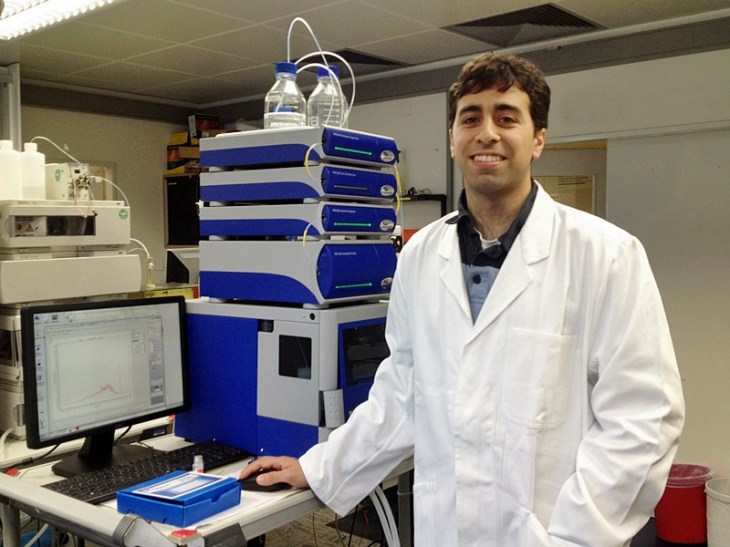
Juan Soto Alvaredo (Photo: Daniel Pröfrock/Hereon)
March – December 2014
TiO2 nanoparticles, one of the most produced nanomaterial worldwide, are widely present in products accessible to the mass market like paints, cosmetics or sunscreens. Due to the extensively increase of production and variety of application of this engineered nanoparticles, their potential effects to the aquatic environments are of great concern.
Therefore, the aim of the project carried out during the research stay of the PhD student Juan Soto Alvaredo was the development of a new analytical method for the determination and characterization of TiO2 nanoparticles in coastal waters using FFF-ICP-MS/MS. Complementary methods like Transmission Electron Microscopy (TEM) and Scanning Electron Microscopy (SEM) were used to confirm and support the results of this new technique.
Juan Soto Alvaredo, PhD student at the University of Oviedo, under the supervision of Dr. Jörg Bettmer and Dr. María Montes Bayón, joined the Department of Marine Bioanalytical Chemistry in March 2014 for a 10-month research stay.
Željka Strižak
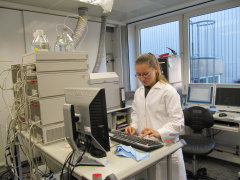
Željka Strižak (Photo: Daniel Pröfrock/Hereon)
October - November 2012
Bioactive trace elements in coastal regions
The training and support EU Program: European cooperation in the field of scientific and technical research (COST) topic: “The ocean chemistry of bioactive trace elements and paleoclimate proxies” enables a short term scientific mission for the Croatian PhD Student Željka Strižak. This six week visit continues the cooperation with the Laboratory for Biological Effects of Metals; Division of Marine and Environmental Research at the Ruđer Bošković Institute (RBI), Zagreb which was initialized by a successful bilateral DAAD project in 2011.
The objective of this study is the analysis and assessment of trace metal exposure introduced by toxic antifouling agents in coastal areas under direct or indirect influence of maritime activities (marinas and ports). The determination of trace metal concentration in seawater as a starting point for metal uptake and their concentration and distribution in mussels as biologically available and potentially toxic metal fraction will be performed during this six week visit at the Department for Marine Bioanalytical Chemistry.
Prof. Naoki Furuta and Kaori Shigeta
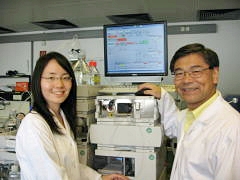
Prof. Naoki Furuta and Kaori Shigeta (Photo: Daniel Pröfrock/Hereon)
August 2008
and
August - October 2008
Prof. Dr. Naoki Furuta joins the Department for Marine Bioanalytical Chemistry for 4 weeks. He is Professor for Environmental Chemistry at the Department for Applied Chemistry, Faculty of Science and Engineering, Chou University Tokyo, Japan. His research interests include the development of analytical methods for trace element analysis in environmental and biological samples with a special focus on selenium and antimony compounds.
Together with Prof. Furuta his PhD student Kaori Shigeta joins the Department for marine Bioanalytical Chemistry. Kaori will stay in our laboratory untill the end of October. Her tentative title of the PhD thesis is " Selenium speciation and metabolism in mice under different nutritional statuses by using HPLC-ICP-MS". In our laboratory she will develop a new separation technique for selenium proteins in blood plasma based on affinity chromatography coupled with ICP-MS detection.
Dr. Blair D. Johnston
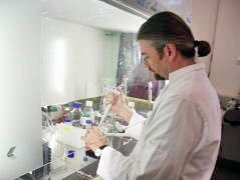
Dr. Blair D. Johnston (Photo: Heike Helmholz)
Juli-August, 2007
and
November 2007
Environmental and Molecular Fish Biology
School of Biosciences
University of Exeter
Hatherly Laboratories, Prince of Wales Road
Exeter, UK EX4 4PS
Research interests: The effects novel natural and anthropogenic xenobiotics in fish and other aquatic organisms.
I am working with the Marine Bioanalytical Chemistry group to investigate the toxicological properties of jellyfish (scyphozoan) toxins to fish and their ecological implications to coastal fisheries and aquaculture related industries. We are utilising a variety of analytical techniques at GKSS to separate and purify many bioactive compounds from the crude preparations of jellyfish venoms and test for physiological and biochemical effects utilising salmonid cell lines as a model test system.
Prof. Dr. Bin Hu
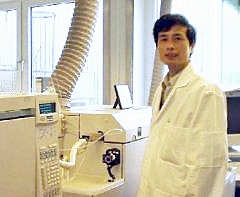
Prof. Dr. Bin Hu (Photo: Andreas Prange/Hereon)
June 1st - August 31st, 2005
and
August 1st - November 30th, 2002
Wuhan University
Department of Chemistry
430072 Wuhan, China
Prof. Dr. Bin Hu joined the Department for Marine Bioanalytical Chemistry for 3 month for a second time. His first sabbatical stay of 4 month has been in 2002.
Prof. Hu is Professor of Chemistry at the Wuhan University in China. He is the vice-director of the Research Centre of Analytical Science. His research interests include hyphenated techniques in atomic and mass spectrometry for element species analysis in environmental and biological systems. Sample preparation for trace and rare earth element analytical chemistry belong to his research topics as well as Glow Discharge Spectroscopy for the direct analysis of solid materials.
Dr. Maria Montes Bayon
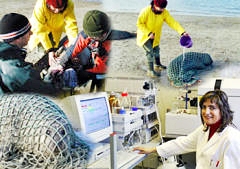
Dr. Maria Montes Bayon (Photo: Antje Kakuschke/Hereon)
March 1st - May 31st, 2005
University of Oviedo
Department of Physical and Analytical Chemistry
Oviedo 33006 - Spain
Dr. Maria Montes-Bayón joined the Department of Marine Bioanalytical Chemistry at the Institute for Coastal Research for a research stay of 3 month. Dr. Montes-Bayón is presently contracted Research Scientist at the University of Oviedo under the "Ramón y Cajal" program. Before, she joint Prof. Joseph A. Caruso"s research group at the University of Cincinnati, USA as a Post-doctoral Fulbright fellowship and post-doctoral assistant. Her research interests are elemental speciation in biological samples.
Prof. Dr. Ryszard Lobinski
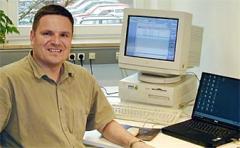
Prof. Dr. Ryszard Lobinski (Photo: Andreas Prange/Hereon)
March 1st - May 31st, 2002
CNRS
Laboratoire de Chimie Analytique
Bio-Inorganique et Environnement
Centre Technologique Hélioparc
L.C.A.B.I.E. CNRS UMR 5034
2, Av du Président Angot
F-64053 Pau Cedex 9, France
Prof. Dr. R. Lobinski joined the Division of Physical and Chemical Analysis for a sabbatical stay of 3 months. Mr. Lobinski is research director at the French National Research Council (CNRS, Pau, France) and Professor of Chemistry at the Warsaw University of Technology. His research interests include trace metal speciation, development of hyphenated techniques, and the mechanistic description of trace metal interactions with biomolecules in living systems.
ICP-MS Anwendertreffen 2014 in Geesthacht – Ein voller Erfolg
Vom 15. bis zum 18.09.2014 trafen sich über 120 ICP-MS Anwender aus Deutschland, Österreich und der Schweiz am Helmholtz-Zentrum Hereon zum 24. ICP-MS Anwendertreffen und 11. Symposium Massenspektrometrische Verfahren Elementspurenanalyse. Diese Veranstaltungsreihe wird im 2-Jahres-Turnus durch die Fachgruppe „Element Massenspektrometrie“ der Deutschen Gesellschaft für Massenspektrometrie (DGMS) durchgeführt. Die lokale Organisation wurde in diesem Jahr von der Abteilung Marine Bioanalytische Chemie des Instituts für Küstenforschung übernommen.
In diesem Jahr sollte insbesondere dem wissenschaftlichen Nachwuchs ein entsprechendes Forum geboten werden, so dass hauptsächlich Doktoranden/innen als Vortragende zugelassen wurden. Eröffnet wurde die Veranstaltung durch den Plenarvortrag des Vizepräsidenten der ETH Zürich, Prof. Dr. Detlef Günther, der weltweit als führender Wissenschaftler im Bereich der Laserablation gilt. Neben 9 Plenarvorträgen bildeten insgesamt 25 Tagungsvorträge sowie 16 Posterbeiträge das vielseitige Tagungsprogramm, wobei die diesjährigen thematischen Schwerpunkte in den Bereichen Laserablation und Bildgebung, Nanopartikelanalyse, Elementspeziation sowie Isotopenanalytik zu finden waren.
Abgerundet wurde die Veranstaltung durch eine Firmenmesse mit 17 Ausstellern, die ihre aktuellen instrumentellen Entwicklungen bzw. neues Zubehör für die Elementanalyse und die Probenvorbereitung präsentierten sowie eine Firmen Vortragssession mit insgesamt 8 Beiträgen.
In 2 Jahren treffen sich die ICP-MS Anwender wieder, diesmal an der Universität in Siegen.
The next European Winter Conference on Plasma Spectrochemistry will be held at the ARLBERG-well.com in Sankt Anton am Arlberg, in Austria, on February 19 – 24, 2017. The conference will be organized by the University of Natural Resources and Life Sciences, Vienna in collaboration with the Helmholtz-Centre for Materials and Coastal Research, Geesthacht, Germany.
Details about registration, abstract submission, accommodation and the scientific program will be provided soon on the conference website
The seminar will take place in July / August 2018. For detailed information please visit the German site

